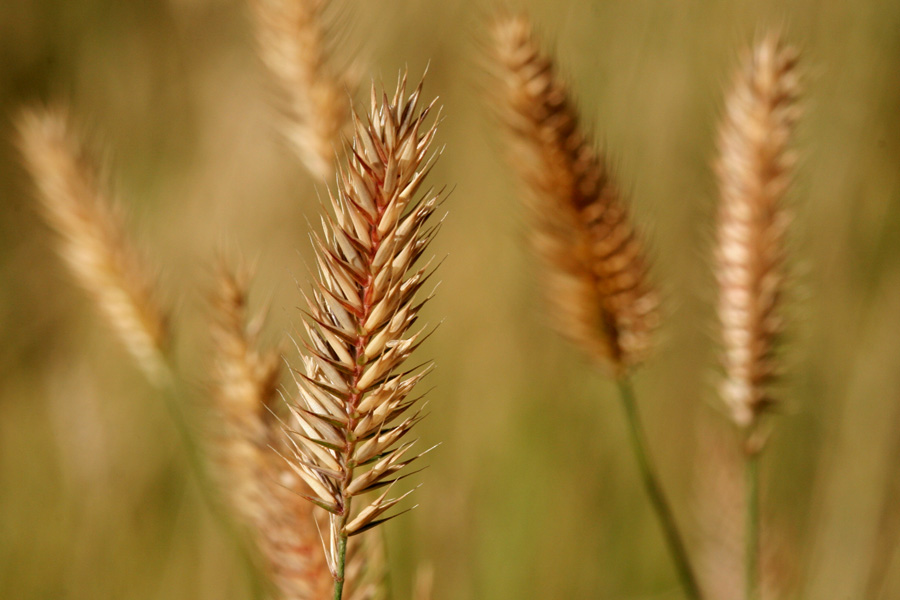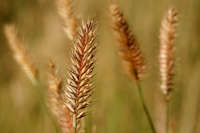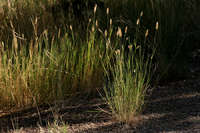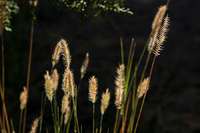Common Name: crested wheatgrass
Duration: Perennial
Nativity: Non-Native
Lifeform: Graminoid
General: Introduced perennial, densely tufted, stems 25-110 cm tall, with spikes to 10 cm long consisting of 2-ranked overlapping spikelets.
Vegetative: Sometimes rhizomatous, stems 25-110 cm tall, often less than 40 cm tall, often variable in height, often bent at the lower nodes; blades flat, 5-20 cm long, 2-6 mm wide, glabrous or pubescent; ligules <2 mm long, membranous, sheaths glabrous, but lower on
Inflorescence: Spikes 1-10 cm long, 5-25 mm wide, lanceolate or ovate, with 2-ranked, closely overlapping spikelets, 7-16 mm long, spikelets with 3-6 florets, glumes 3-6 mm long, 3-veined, glabrous or with hairs on the keels, usually awned, awns 1-3 mm long, lemmas 5-9 mm long, glabrous or with hairs, with acute and usually awned apices, awns 1-6 mm, anthers 3-5 mm.
Ecology: Found on dry range lands and disturbed soils, is shade and drought tolerant, grows early in the season, then becomes dormant and will resume growth in the fall if there is sufficient moisture; grows at an elevation of 1500-3700 m (5000-9000 ft); flowers
Distribution: Throughout the western and northern United States.
Notes: Is easy to establish so has been widely used throughout the West to restore productivity in overgrazed, disturbed, or burned areas. However, since it is very long-lived, persisting for decades, it may interfere with establishment of both native and non-native species. Is highly palatable to livestock, particularly during the spring. Is native to Europe, the eastern Mediterranian, Mongolia, and China. It is differentiated from A. fragile by having awned lemmas and having spikelets diverging from the rachises at 30-95 degree angles, while A. fragile have unawned lemmas, and spikelets diverging at angles of less than 30 degrees. Also, it differs from A. cristatum by having spikelets that are strongly ascending (vs ultimately diverging from the rachis at wide angles), stems are often more than than 40 cm tall and are uniform in height (vs. less than 40 cm tall and of variable heights), and are straight, not bent.
Ethnobotany: Is used to reestablish vegetation in disturbed areas and is planted for winter forage and for agriculture.
Etymology: Agro is from Greek agros for field, and pyron is from Greek puros, wheat. Cristatum means crested or comb-like.
Editor: Lkearsley, 2012
Plants 3-8 dm; lvs 1.5-6(-10) mm wide; ligules very short; spikes short and stout, 3-7(-10) cm; spikelets 7-10 mm, variously glabrous or scabrous to evidently rough-hairy; glumes and lemmas short-awned or nearly awnless; 2n=14, 28, 42. Eurasian sp., widely planted in w. U.S. as a range grass, and locally established here and there in our range. (A. pectiniforme, with subglabrous spikelets; A. sibiricum and A. desertorum, with relatively small spikelets not quite so closely crowded and not so strongly divergent from the rachis. These segregates perhaps to be recognized at some level, but the taxonomy still not clear.)
Gleason, Henry A. & Cronquist, Arthur J. 1991. Manual of vascular plants of northeastern United States and adjacent Canada. lxxv + 910 pp.
©The New York Botanical Garden. All rights reserved. Used by permission.








